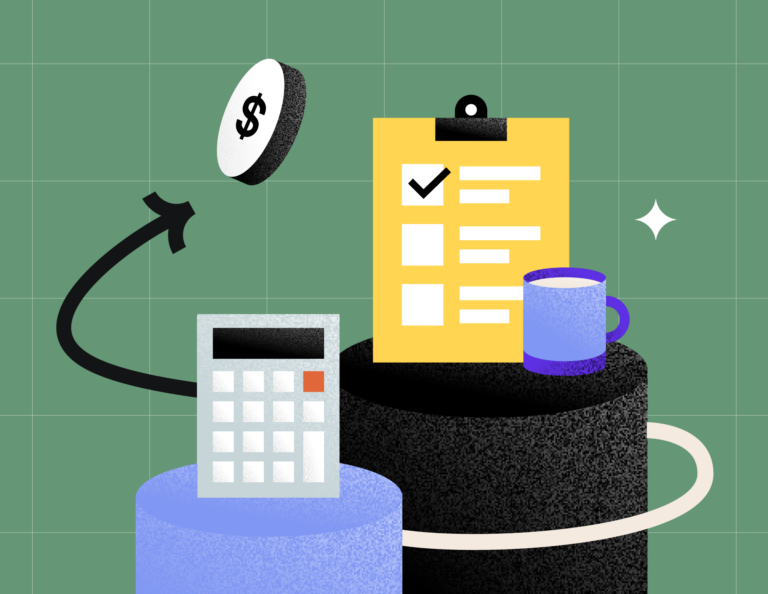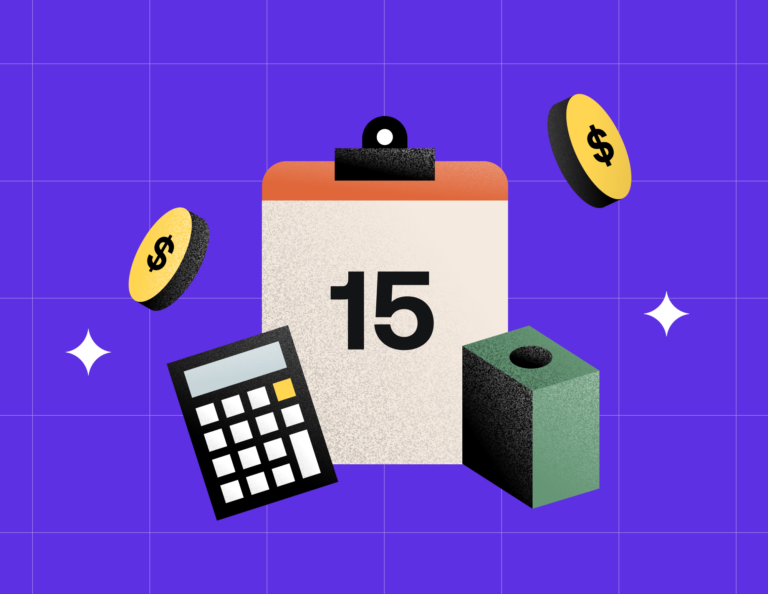
I am a firm believer in paying yourself monthly from your independent business. I find that it’s a great way to keep yourself motivated to keep selling your services and serving your clients well. I’d recommend implementing this practice early in your business as it will also help you determine when you’re ready and able to leave your day job (if that’s one of your goals) and rely on your business income full-time. If you’re already operating an independent business, the regularity of paying yourself will help you keep track of your business’s financial health.
As an entrepreneur, I struggled for a while to learn the best way to pay myself from my business. If you’re like me, there are likely many things about your business that can make it difficult to wrap your arms around your business finances.
Don’t worry, you’re not alone. Here I’m sharing the simple process that has worked for me and that you can use to to get clear out your business finances easily.
Methods to Pay Yourself as a Business Owner
First off, your business structure is the biggest factor that will determine how you should pay yourself. If you’re just starting a business and not sure which structure to use, you should work with an attorney to better understand the requirements for the different types of business plans and determine the one that works best for you and your goals. In addition to impacting how your pay yourself, your business structure will determine how you pay taxes.
If you’re a sole proprietor, ownership or limited liability company (LLC), you can take an owner’s draw. An owner’s draw means that you can pull from your business profits as needed, up to the amount you’ve invested in the business. If your business operates or is taxed as a corporation, you can take a salary.
The owner’s draw method offers more flexibility, though an owner’s salary has the benefit of being taxed upfront.
Estimate Your Taxes and Costs
One of the most important things to consider are your costs. As an independent business owner, for instance, you have to consider how much on average you pay annually for booking and management software, processing fees, education and so forth; all of the essentials that go into running your business.
You also want to remember that you’ll need to pay taxes as well. Your tax professional can recommend how much to set aside based on your financial situation. Here’s an example using a wedding business owner::
Business costs:
$500/event for assistants
Annual costs:
$400/year for a small business CRM (I use HoneyBook)
$250/year for website URL & hosting
$5,000 education budget
Taxes: 30%
Estimate Your Monthly Pay Twice Per Year
Now that you’ve got a good idea of your costs, you can estimate your monthly payment at the start of the year based on the bookings that you have. Let’s say you have seven projects booked at the start of the year for $5,000 each. That’s $35,000 income annually.
Using the example costs above, that gets you to an estimate of $9,150 in expenses and $7,755 in taxes. With just over $18,000 left, you can pay yourself about $1,500/month comfortably. Chances are, you’ll book additional projects during the year, so at a later stage (maybe in June or July) you can go through this exercise again and increase your monthly payment based on that increase.
If you raise your rates at some point during the year, this will also affect how much you can pay yourself each month. For each financial milestone in your business, come back to this process and reassess your monthly payout.
Pay Yourself Based On Projects Booked In The Current Year (Optional)
Another optional tip that has helped me a whole lot over the years has been paying myself based on weddings/projects booked for the current year. So, if I get deposits for events that are taking place in the next calendar year, I won’t factor that income into my pay for the current year. Instead, I’ll factor those payments into my income for the next year and include them in my payout calculations for the year the event is scheduled to take place.
Pro Tip: If I decided to pivot to a new area, I still have the money in the bank for those events and I don’t feel like I’m closing out my final weddings “for free.” It’s also a great way to keep a comfortable business account balance.
Make A Plan To Increase Your Monthly Pay Each Year
Finally, your current numbers should always be used to help you make plans for the future. If you pay yourself a salary of $1,000/month in your first year of doing this exercise, you can make a plan to increase that to $1,500 or $2,000 in the upcoming year and keep doing this. Setting goals to increase your rates will keep you motivated and your business growing.
Setting these salary goals will influence your pricing, marketing and growth plans and strategy for the upcoming year. Understanding your costs and numbers will give you the confidence you need to approach your next price increase and stop discounting your services.
If you’re feeling unmotivated by financial planning, try to think about a lifestyle goal or milestone that you want to achieve. For me, it was buying my first home. At the time, I was working a day job and also planning weddings. I told myself that I wanted to pay myself consistently from my business so that I could pay down my mortgage as fast as I could with the additional income. This tactic motivated me to stay on track and stay smart with my finances. I’d like to encourage you to find your motivation to do this quick exercise and make a plan for your business as well!
P.S. To help you along, you can download my free cost and income sheet to help you track your numbers and make the right decisions for you and your business! Click here to get the free guide.
Ready to use Financially Plan? Get our Financial Planning for Independent Business Owners Ultimate Guide.



